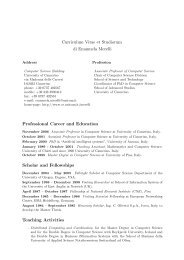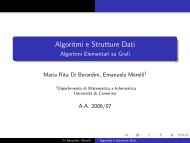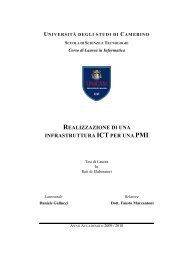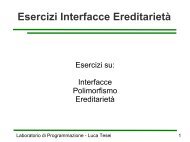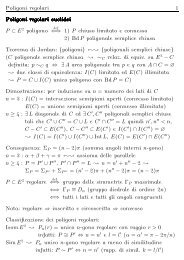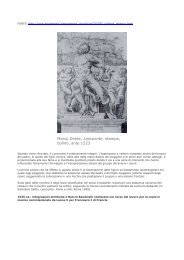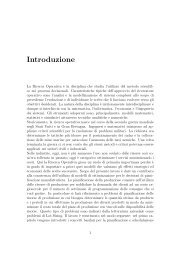Sossinsky:Knots. Mathematics with a twist.pdf - English
Sossinsky:Knots. Mathematics with a twist.pdf - English
Sossinsky:Knots. Mathematics with a twist.pdf - English
Create successful ePaper yourself
Turn your PDF publications into a flip-book with our unique Google optimized e-Paper software.
8 KNOTS<br />
A Mathematical View of Knot Classification<br />
Let us pose the problem in precise terms, rigorous enough to satisfy a<br />
mathematician (readers disinclined to scientific rigor can skip this<br />
part after glancing at the figures). First of all, the very concept of a<br />
knot needs to be defined. We define a knot, or more precisely a representation<br />
o[ a knot, as a closed polygonal curve in space (Figure 1.7a).<br />
A knot is just a class of equivalent representations of knots, equivalence<br />
being the relation of ambient isotopy, defined as follows: An elementary<br />
isotopy is achieved either by adding a triangle (as we add ABC<br />
in Figure 1.7b) to a segment (AB) of the polygonal curve, then replac<br />
ing this segment by the two other sides (AC and CB), or by doing the<br />
opposite. Of course, the triangle must have no points in common <strong>with</strong><br />
the polygonal curve other than its sides. An ambient isotopy is just a<br />
finite sequence of elementary isotopies (Figure 1.7c).<br />
Clearly this definition corresponds to our sense of a knot as the<br />
abstraction of a string whose ends are stuck together, and ambient<br />
isotopy allows us to <strong>twist</strong> and move the knot in space as we do <strong>with</strong> a<br />
real string (<strong>with</strong>out tearing it). From the aesthetic point of view, it is<br />
perhaps not satisfying to think of strings that have angles everywhere,<br />
but it is the price to pay for defining a knot in a manner both elementary<br />
and rigorous. I<br />
Representing a knot as a polygonal curve has a motive other than<br />
the ability to attach triangles to it (which presupposes that the "curve"<br />
is made of segments); in fact, it is also a necessary condition for avoiding<br />
"local pathologies." It is required to avoid the so-called wild knots,<br />
which are not topologically equivalent to polygonal curves (or to a<br />
smooth curve). Wild knots are the result of a process of infinite knot-



